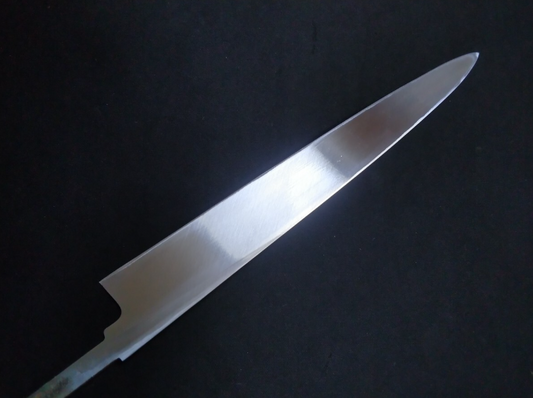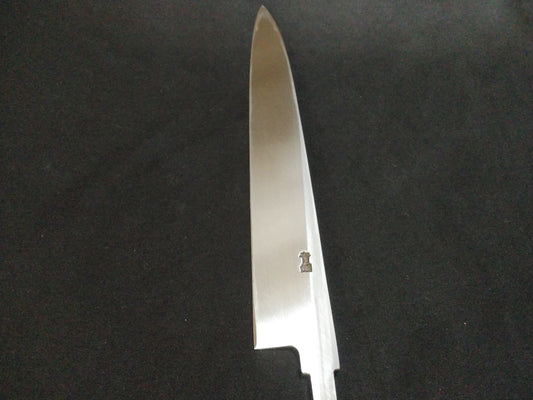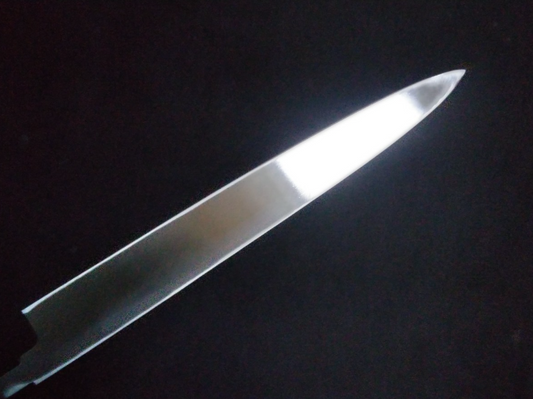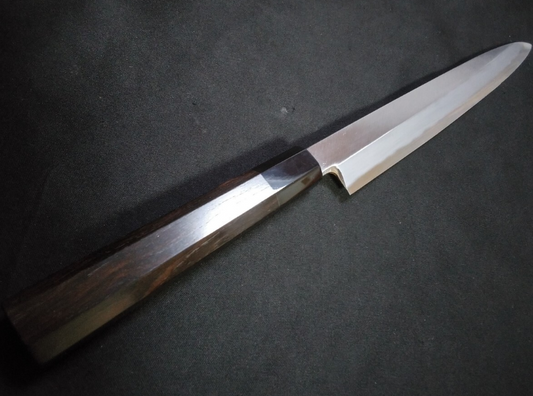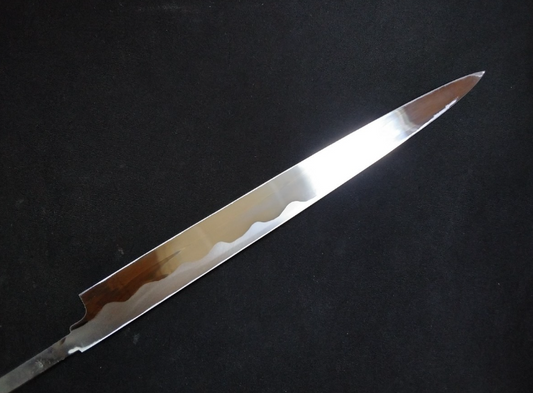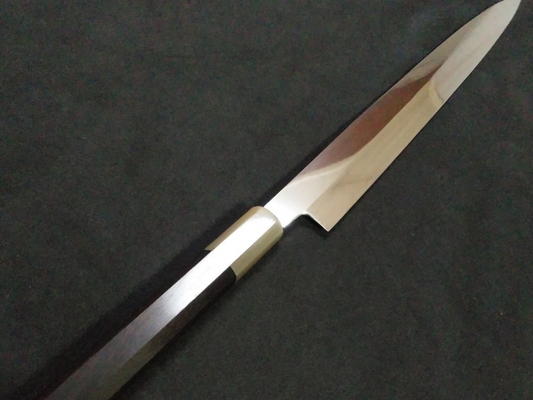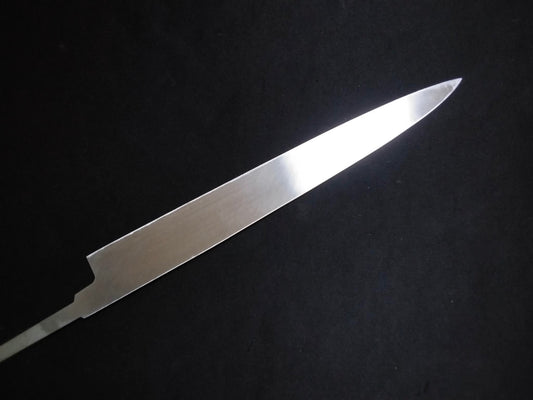
Yanagiba
-
Graceful like a sword. Sharp like no other.
The Yanagiba glides through fish in a single motion — preserving texture, flavor, and beauty.
Loved by Japan’s top chefs, it’s more than a knife — it’s a tradition you can hold in your hand. -
Yanagiba Japanese Knife Collection
-

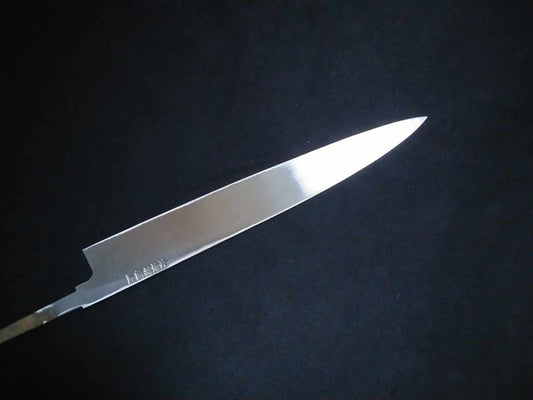 Sold out
Sold outWhite Steel #2 Yanagiba 210mm
Regular price $260.00 CADRegular priceUnit price / per$0.00 CADSale price $260.00 CADSold out -
White Steel #2 Yanagiba 240mm-Kido Finishing
Regular price $260.00 CADRegular priceUnit price / per -
Blue Steel #2 Yanagiba 240mm-Mirror Polished(one side)
Regular price $279.00 CADRegular priceUnit price / per$0.00 CADSale price $279.00 CAD -
Blue Steel #2 Yanagiba 270mm-Mirror Polished(one side)
Regular price $298.00 CADRegular priceUnit price / per$0.00 CADSale price $298.00 CADSold out -
White Steel #2 Yanagiba 270mm-Kido Finishing
Regular price $300.00 CADRegular priceUnit price / per -
Blue Steel #2 Yanagiba 270mm- Kido Finishing
Regular price $365.00 CADRegular priceUnit price / per$0.00 CADSale price $365.00 CAD -

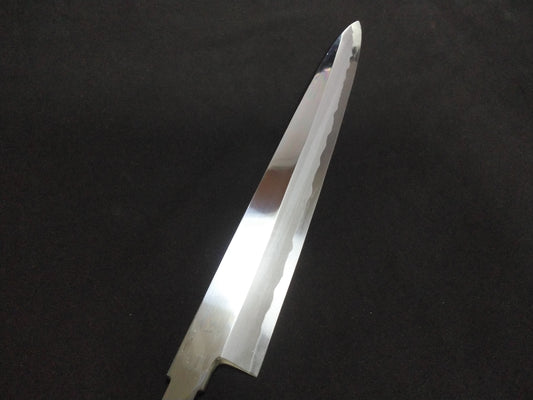 Sold out
Sold outWhite Steel #2 Yanagiba 330mm
Regular price $380.00 CADRegular priceUnit price / per$380.00 CADSale price $380.00 CADSold out -
White Steel #1 Yanagiba 270mm-Kido Finishing
Regular price $380.00 CADRegular priceUnit price / per -
White Steel #2 Yanagiba 330mm-Mirror Polished(both sides)
Regular price $387.00 CADRegular priceUnit price / per$0.00 CADSale price $387.00 CADSold out -

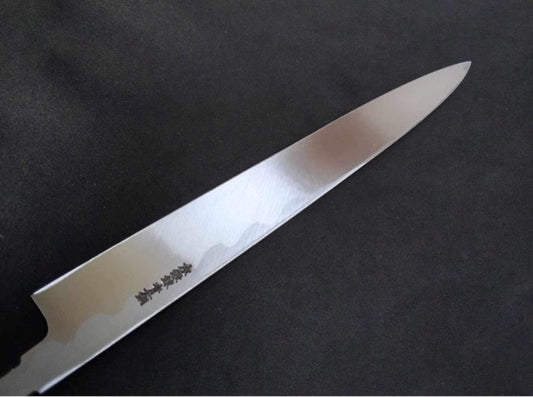 Sold out
Sold outBlue Steel #1 Yanagiba 270mm
Regular price $393.00 CADRegular priceUnit price / per -
Blue Steel #2 Yanagiba 300mm-Mirror Polished(one side)
Regular price $407.00 CADRegular priceUnit price / per$397.00 CADSale price $407.00 CADSold out -
White Steel #2 Yanagiba 300mm-Mirror Polished(one side)
Regular price $431.00 CADRegular priceUnit price / per$0.00 CADSale price $431.00 CAD -
Blue Steel #2 Yanagiba 300mm -Mirror Polished(both sides)
Regular price $460.00 CADRegular priceUnit price / per$460.00 CADSale price $460.00 CADSold out -
Super Steel (Honyaki) Yanagiba(Ultra thin) 240mm -Mirror Polished(one side)
Regular price $470.00 CADRegular priceUnit price / per$0.00 CADSale price $470.00 CADSold out -
Super Steel (Honyaki) Yanagiba(Ultra thin) 270mm -Mirror Polished(one side)
Regular price $500.00 CADRegular priceUnit price / per$0.00 CADSale price $500.00 CADSold out -
White Steel #2 Yanagiba 330mm-Mirror Polished(one side)
Regular price $500.00 CADRegular priceUnit price / per$0.00 CADSale price $500.00 CAD
KIREAJI's Three Promises to You
-

1. Exceptional Japanese Knives
Our knives, crafted by Sakai City's master artisans, combine traditional techniques with carefully selected materials, delivering unrivaled sharpness and durability.
-

2. For a Lifetime of Use
At KIREAJI, we see knives as lifelong companions. Each knife comes with a free saya, and we offer Honbazuke hand-sharpening by Shiroyama Knife Workshop in Sakai City.
-

3. Supporting the Joy of Continued Use
KIREAJI knives are made to grow with you. That’s why we provide trusted after-sales care (fee-based) .
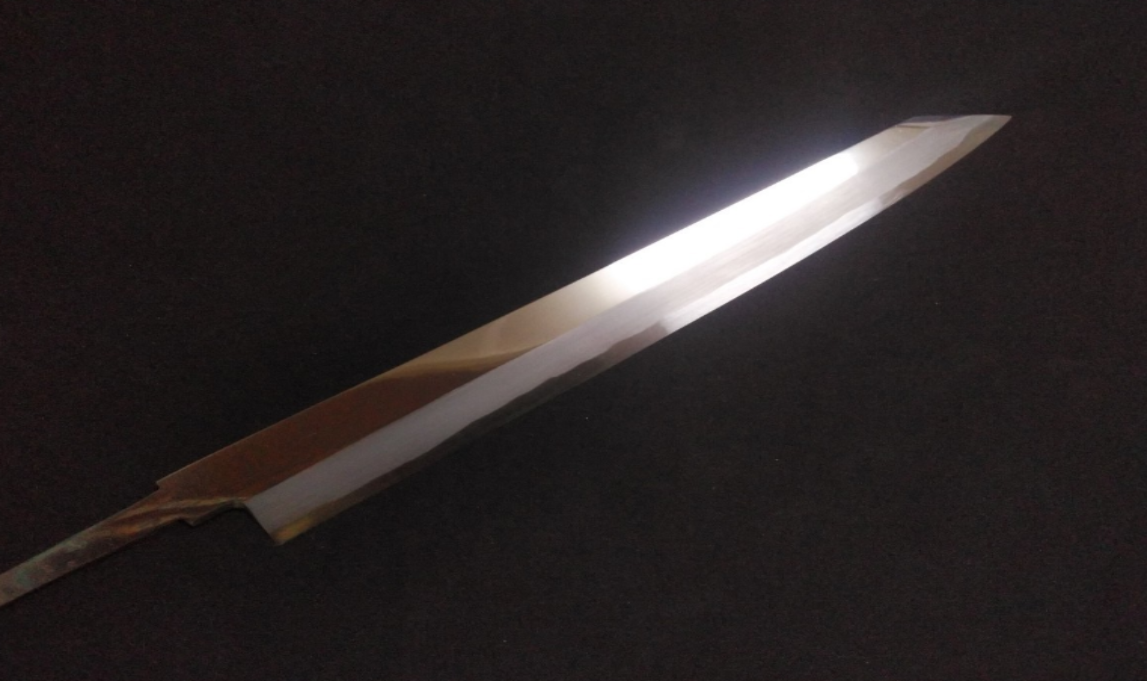
Why Many Product Photos Show Only the Blade
At KIREAJI, every knife is Made to Order.
That means your knife is completed — handle attached and final adjustments made — only after you place your order, by skilled artisans in Sakai, Japan.

Global Delivery from Sakai
Across the world, discerning customers seekgenuine Japanese knives crafted in Sakai.
At KIREAJI, we work alongside the master artisans of Sakai to fulfill that desire — shipping authentic Japanese knives straight from Sakai to kitchens around the globe.
-
Yanagiba
-
When it comes to crafting the perfect sashimi, the Yanagiba stands out for its exceptional design and functionality. With its long blade length and single-bevel edge, this knife is tailored for precise and clean cuts, enhancing both the texture and presentation of your culinary creations. Whether you're a professional chef or a home cook with a passion for Japanese cuisine, understanding the unique features of the Yanagiba can elevate your cooking experience and ensure every slice is as perfect as the last. Explore the two key attributes that make the Yanagiba an indispensable tool in the kitchen.
-

-
The Two Key Features of Yanagiba
-
1. Long Blade Length
One of the standout features of the Yanagiba is its long blade length. This extended length allows you to make smooth, single cuts through ingredients. When preparing sashimi, the long blade helps to slice the fish cleanly without disrupting its texture, preserving a smooth and delicate feel. By avoiding a sawing motion, you maintain the fish’s quality and flavor, resulting in high-quality sashimi with a refined appearance and taste.
-
2. Single-Bevel Edge
Another significant feature of the Yanagiba is its single-bevel edge. This design offers a sharper and more precise cutting edge compared to double-beveled knives. The single-bevel edge allows for clean, effortless slicing, with the flat side (the "ura" or back) ensuring that the knife doesn’t stick to the food. This results in a neat cut and helps maintain the sharpness and durability of the blade. The single bevel design enhances the ability to achieve sharp, defined slices, improving both the visual appeal and taste of the sashimi.
-
These features make the Yanagiba an essential tool for chefs who prioritize precision and quality in their culinary creations.
Why Do the Japanese “Pull” When Slicing Sashimi? — The Aesthetics in a Single Stroke
-
"Why do the Japanese slice sashimi by pulling the knife, rather than pushing or sawing?"
The answer goes far beyond technique. It reflects a deep-rooted philosophy—a respect for the ingredient, a pursuit of beauty, and the soul of craftsmanship. -
The Precision of the “Pull Cut”
Japanese sashimi knives—yanagiba, fuguhiki, and others—are unlike any ordinary kitchen knife.
Long, narrow, and single-beveled, they are designed specifically for the “pull cut”, a movement where the knife is drawn toward the body in a smooth, single motion using the full length of the blade.This method allows the chef to slice cleanly through the fish without damaging its delicate structure. A swift pull results in a clean cut, while sawing or pressing can easily crush the fibers.
-

Cutting Changes the Taste
The most crucial factor in delicious sashimi is not breaking the cells.
Fish flesh is incredibly delicate and full of moisture and umami. When improperly cut—by pushing or sawing—the drip (flavorful liquid) escapes, and the texture and appearance suffer.In contrast, a smooth pull cut leaves the surface intact, preserving both the natural flavor and the clean, glistening look of fresh sashimi.
This is a clear reflection of the Japanese culinary philosophy: enhance the natural quality of the ingredient rather than overpower it. -
Aesthetic Tools for a Purposeful Technique
The length and thinness of the yanagiba are not for show. They allow the chef to use the knife’s own weight and length, requiring no excess force—just a quiet, purposeful draw.
Here, efficiency meets elegance. The pull cut is not only functional but deeply expressive.
In a single stroke, the chef reveals both his skill and his mindset.This is not just cooking—it is a ritual of presence, care, and respect, akin to a tea ceremony or calligraphy.
-

A Cultural Gesture in a Slice
Japanese cuisine emphasizes not bold stimulation, but subtle, silent impact.
It invites reflection:
“Where did this fish swim? What kind of life did it live?”
“How can I honor its journey in my preparation?”That’s why the cut matters. A single, graceful pull with the yanagiba can convey emotion, precision, and reverence—all in one fluid gesture. -
Why the Pull Cut Matters
To “pull” when slicing sashimi is to achieve the best possible appearance, texture, and flavor—but it’s also an act of cultural expression.
It reflects the Japanese values of harmony, respect, and refinement.
If you ever hold a yanagiba in your hands, try to feel the spirit behind it—a quiet mastery that speaks volumes without words.
FAQ About Yanagiba

01. What is a Yanagiba knife?
The Yanagiba is a traditional Japanese kitchen knife designed specifically for slicing raw fish in a single, long drawing motion. It is the knife of choice for preparing sashimi and sushi, ensuring clean cuts with minimal damage to the fish’s texture or appearance.
02. What are the key features of a Yanagiba?
ー Long, slender blade (usually 240mm to 330mm) for slicing entire fillets in one stroke
ー Single-bevel edge (sharpened only on one side) for precision and thin cuts
ー Pointed tip for delicate trimming and detailed work
ー Made of high-carbon steel such as Shirogami (White Paper) or Aogami (Blue Paper), offering superior sharpness
These features help chefs make clean cuts without crushing the fish, preserving both appearance and flavor.
03. Why is the Yanagiba essential for sashimi?
In Japanese cuisine, the appearance and mouthfeel of sashimi are as important as taste. The Yanagiba enables slicing in one continuous motion without sawing, resulting in:
ー Smooth, glossy surfaces that look elegant
ー Minimal damage to the fish's cells, preserving texture and umami
ー Consistent thickness for uniform presentation
04. How do I choose the right size of Yanagiba?
Choose based on your experience and kitchen setup:
ー Beginners: Around 240mm
ー Intermediate users: Around 270mm
ー Advanced users: 300mm or more
For home kitchens, 240mm to 270mm is common. For professional chefs, 270mm to 330mm is preferred.
Make sure your cutting board and workspace can support the length of the knife.
05. Can I use a Yanagiba to slice meat?
Yes, but with limitations. The Yanagiba can be used to thinly slice boneless meat such as beef carpaccio.
However, it is not suitable for cutting through bone, sinew, or hard vegetables. For general meat preparation, a dedicated slicer like a Sujihiki is recommended.
06. What is the difference between a Yanagiba and a Fuguhiki?
The Fuguhiki is a variation of the Yanagiba used especially for slicing pufferfish (fugu). Key differences include:
ー Fuguhiki has a thinner blade than Yanagiba
ー Fuguhiki is more flexible
ー Fuguhiki is used for extremely thin slices of delicate fish
ー Yanagiba is more versatile and used for general sashimi preparation
07. What does "Yanagiba" mean?
"Yanagiba" (柳刃) literally means "willow blade" in Japanese. The name comes from the blade’s long, slender shape, which resembles a willow leaf. It reflects the elegance and finesse of the knife’s motion and cut.

Japan’s Sashimi Culture Was Born from a Razor-Sharp Knife
Sashimi is more than just raw fish—it’s a tradition, an art, and a precise culinary practice that could only have been born in Japan. At the heart of this refined cuisine lies a tool that made it all possible: the Japanese knife. In this article, we explore how the evolution of ultra-sharp knives shaped the rise of sashimi, and why the blade’s ability to cut with surgical precision is not just a detail—it’s the foundation of Japan’s raw fish culture.
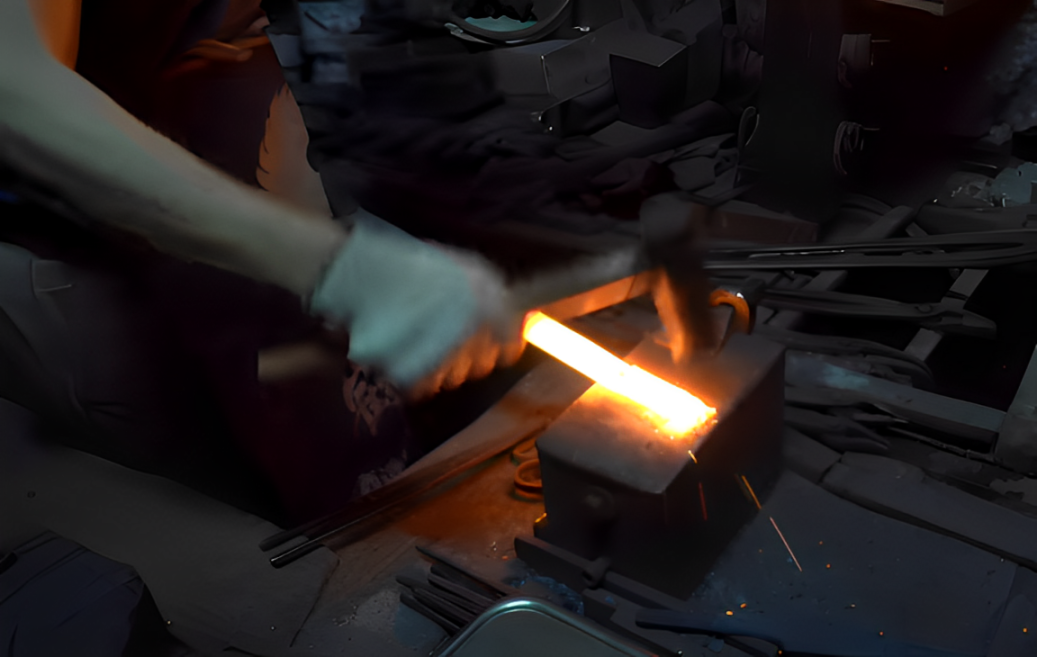
The Origin of Craftsmanship
-
The Art of Slicing Sashimi: The Perfection of a Single-Edged Knife
When it comes to slicing sashimi, a single-edged knife is truly the best choice. The sharpness of this knife allows you to cut through the delicate texture of the fish without damaging it, creating the sensation that the fish is almost cutting itself. The characteristic of a single-edged knife is that its sharp edge on one side ensures smooth slicing, and the sashimi’s surface finishes beautifully, showcasing its elegance.
-
Not only does it enhance the visual appeal, but it also brings out the freshness and flavor of the fish. Using a single-edged knife that has been meticulously crafted by a skilled artisan, the taste of the dish is greatly elevated. The moment the knife touches the fish, its precision demonstrates the craftsmanship of the artisan. It is in that moment that the act of slicing sashimi transforms from just cooking to a work of art.
-
Yanagiba Knives—The Ultimate Design for Cutting Flavors
The Yanagiba knife we craft is not just a tool. It is the ultimate design created to capture the flavor of the ingredients. Every time I use it, I am reminded of the profound purpose behind its form. As the sharp edge touches the food, its precision brings out the beauty of the ingredients, almost as if we are receiving nature's gifts in their purest form.
-
The distinctive shape of the Yanagiba knife—long, thin, and light—is not just for aesthetic appeal, but serves a specific purpose. For example, when cutting sashimi, the length and flexibility of the blade allow us to slice the ingredients without damaging them. This is the secret to bringing out the true flavors of the food.
-
Through years of refining my craft, I have come to fully appreciate how essential this shape is. The intention behind the design is transferred to the user, enhancing the natural taste of the ingredients. When you hold a Yanagiba knife, you will feel that connection too. It’s not just about cutting—it’s about dialogue with the ingredients. I believe that this tool, born from tradition, will breathe new life into your cooking.
-
The moment the knife comes to life, it becomes a reflection of the pride and passion of the chef, turning each slice into a masterpiece that enriches the table.





